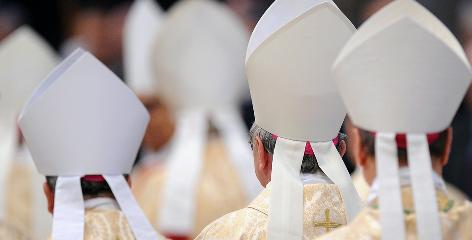By William Crawley
BBC
July 16, 2010
http://www.bbc.co.uk/blogs/ni/2010/07/how_to_create_a_pr_disaster.html
 |
The Vatican has done it again. In their effort to show that they are dealing seriously with clerical abuse by priests, they have managed to provoke a storm of protests around the world, with headlines such as this (in The Times): "Female priests are as sinful as child abuse". This entire debacle is yet another example of a Vatican media operation that is disconnected from the rest the world.
How did it all go wrong? First, the Vatican decided to publish a set of revisions to the church's Canon Law, which incorporate changes in practice that have taken place in recent years. These guidelines are described in Church law as "Normae de gravioribus delictis", or "Norms concerning the most serious crimes". (Read the fully revised text here. The new norms are described here.)
Some of the new guidelines will be welcomed by victims groups -- for example, the provisions permitting non-clergy to be involved in canon law trials and the doubling of the statute of limitations period in respect of child sexual abuse allegations or those that will speed up the processing of child abuse investigations within the church. Possessing images of child sexual abuse (described here as the "acquisition, possession or distribution of pornographic images of minors under the age of 14") has also been added to the list of "grave crimes", and the church's highest ranking figures (cardinals, patriarchs, apostolic legates, and others) are now subject to the jurisdiction of the Congregation for the Doctrine of the Faith. Similarly, the Pope now has the freedom to remove a convicted child abuser from the clerical state without the need for a church trial. And the sexual abuse of "developmentally disabled" adults by priests has been given the same legal status as child sexual abuse. All this will be widely welcomed.
Some of the new guidelines will certainly not impress victims groups, however. The Vatican has resisted calls to impose a policy of mandatory reporting by bishops of all allegations of child sexual abuse, and regulations guaranteeing the secrecy of church trials are maintained "in order to safeguard the dignity of all the people involved".
If this was as far as the document went, we would be debating why it has taken the church so long to practically address these areas of concern and critiquing the document for not going far enough.
But this church document is a catch-all updating of the church's norms relating to sacramental life and morals; so it also deals with "grave crimes" against the church's teaching and practice in other areas beyond the abuse of children. There are new norms dealing with heresy and apostacy, and norms relating to abuses of sacramental discipline, such as those priests who grant absolution in cases where absolution is prohibited by church law (perhaps the Vatican has the case of a sympathetic priest hearing the confession of a woman who had an abortion?).
Thus, we also find the includion of a new norm dealing with attempts to ordain women to the priesthood. This is covered in Article 5, which reads:
". . . both the one who attempts to confer sacred ordination on a woman, and she who attempts to receive sacred ordination, incurs a latae sententiae excommunication reserved to the Apostolic See. If the one attempting to confer sacred ordination, or the woman who attempts to receive sacred ordination, is a member of the Christian faithful subject to the Code of Canons of the Eastern Churches, with due regard for can. 1443 of that Code, he or she is to be punished by major excommunication reserved to the Apostolic See. If the guilty party is a cleric he may be punished by dismissal or deposition."
This new article was added to the revised norms because it describes what is already current practice, having been established by the decree of the Congregation for the Doctrine of the Faith on 19 December 2007. Since the document is a procedural and constitutional updating of the church's guidelines on a variety of disciplinary matters, it makes sense to include this already revised norm.
In other words, there is no attempt in this document to claim that ordaining women is morally comparable to the abuse of children. But that's exactly how it looks to those unschooled in canon law or Vatican-speak. Hence the headlines around the world this week which trade on this mis-reading of the text.
You might think that a media-savvy Vatican offical might have seen this one coming; but we learned recently that Vatican officials had to have the internet explained to them by the Pope, so we shouldn't expect much media-savvyness in those quarters. Another own-goal by the Vatican.
We'll be looking at the new guidelines and the controversy surrounding them at the start of this week's Sunday Sequence.
Any original material on these pages is copyright © BishopAccountability.org 2004. Reproduce freely with attribution.